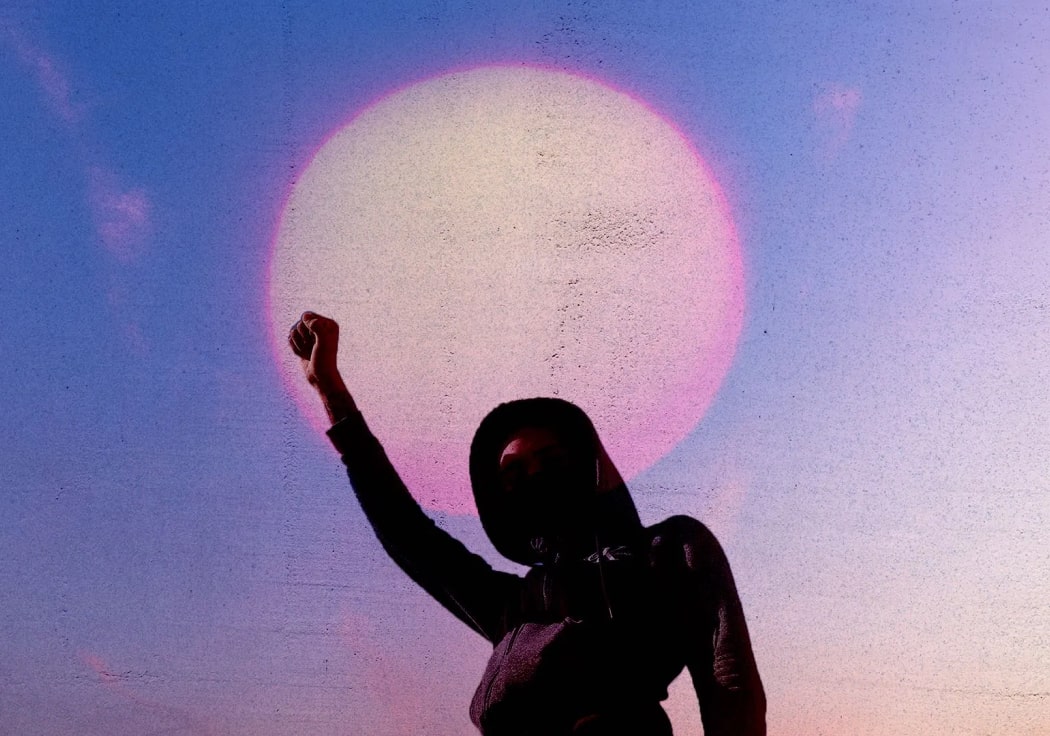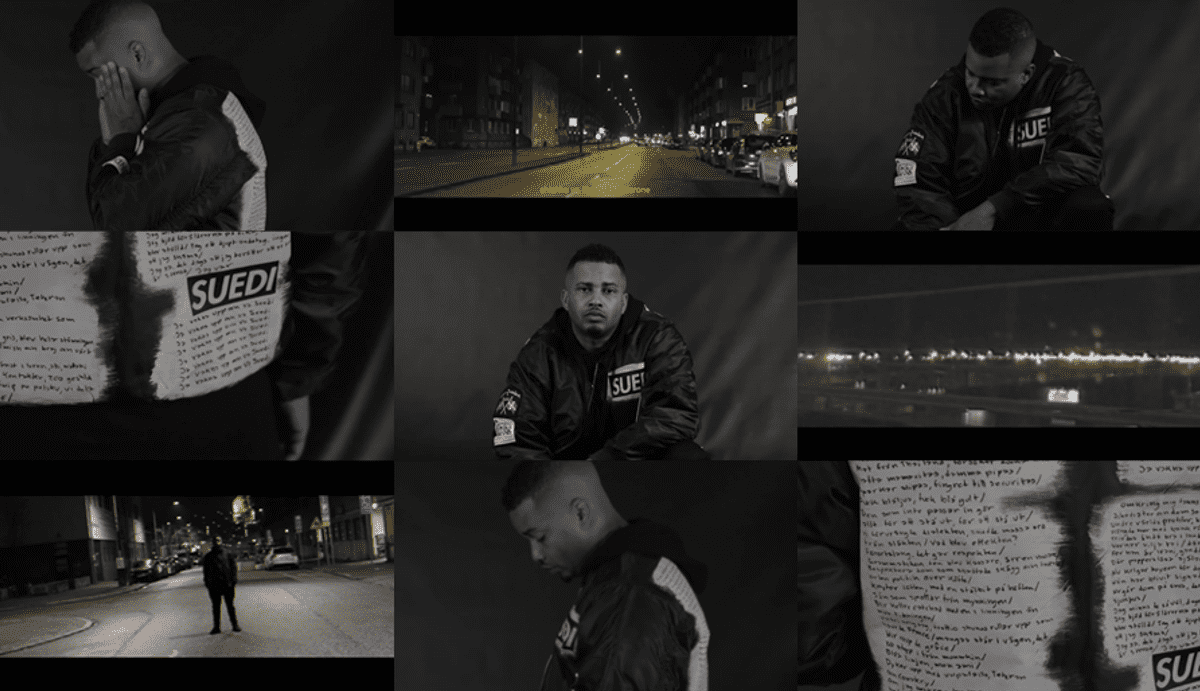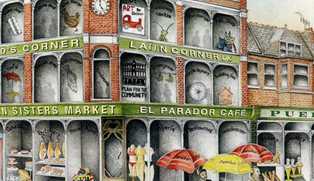Hearing Swedish rapper Erik Lundin’s track ‘Suedi’ for the first time is like experiencing time travel. His words form a tunnel of images, complex emotions and unanswered questions that take me back to my own upbringing in rural, white Sweden. I am filled with a feeling of immense gratitude that finally someone has put words to a problem I had long thought was only my own.
Growing up a child of dual heritage in Sweden was at times challenging. My sister and I were the only dark skinned kids in our school of about 150 students. High-school in a larger and (slightly) more mixed city brought us into contact with other Swedes of Colour (SOC), but up until that point there was little to assure my sister and I that the feelings of otherness we harboured growing up were more common than we thought. The fact that I am only now, in my mid-twenties, hearing it acknowledged and affirmed as a collective experience through a popular platform speaks to the muted discussions on race relations and identity within Sweden.
Born Ibrahima Erik Lundin Banda, to a Swedish mother and Gambian father, Lundin split his childhood between Västerort, one of Stockholm’s rougher suburbs made up of a largely immigrant population, and his maternal grandparent’s home in Sweden’s countryside. Moving between these two starkly different worlds gave Lundin an appreciation for language. At his maternal grandparents’, Lundin spoke ‘svenska’, that is ‘normal’, state-approved Swedish. Västerort had him code switch to what has colloquially been coined ‘blatte-Svenska’, blatte being a pejorative for a darker skinned individual of non-northern European descent. (This term has, to a certain extent, been reclaimed by those who it was historically used to describe, but as with all reclamations of racially charged words, acceptance of this word depends largely on when and by whom it is used).
Lundin’s use of blatte slang functions as both a natural affectation of the type of repping of hometowns that many hip-hop artists do, as well as a representation of the effect that Sweden’s multicultural population has had on the language. This creole that has come out of these multicultural pockets in Sweden, draws on Turkish, Polish, Arabic and Roma, to name a few. Lundin does not shy away from criticising his environment, but his lyrics also communicate a deep sense of love and appreciation for the place he grew up. His musical and linguistic ingenuity has been recognized for its significant contributions to contemporary Swedish culture and art, so much so that his work was made part of the collection at the Museum of Performing Arts in Stockholm alongside the work of Evert Taube and Cornelis Vrejswiik, two legendary Swedish musician and lyricists. His long-awaited EP Suedi (2015) and later Välkommen Hem (2016) were greeted with both popular and critical acclaim.
Lundin’s words demand attention. He paints a picture of Sweden that stands in stark contrast to the calm, peaceful image of a Scandinavian utopia built on socialism and equity. His Sweden is urban, young and mixed, a country brimming with the frustration of unanswered questions and muffled voices. In the track Västerort he bears witness to a life of violence, petty crime and crushed ambition, a life not uncommon in the suburbs of Sweden. While in De Ba Blev Så, Lundin revisits the events of the 2013 Husby riots and criticizes the police reaction to the protests and their spreading of misinformation. In his first album, Suedi, he guides us through the physical, as well as emotional, spaces of otherness and displacement that he inhabited before finally arriving at self-acceptance.
My appreciation for his work, both critically and personally, made me eager to find out what his music has meant to other Swedes of Colour and the impact they think his music has had on conversations about race, belonging and multiculturalism in Sweden.
Sarah B
Sarah B is Ugandan-Swedish and currently living in Uppsala. When I ask her what it is about Lundin that struck her, she says: “He is able to put his finger on it. He just points at it and says, ‘This is what life is like for me,’ and I recognised myself in that. He put words to emotions that are really difficult to describe – emotions that aren’t given much space in everyday life in Sweden.”
It is ironic that it is ‘space’ that is lacking in Sweden. Although the face of Sweden has been changing steadily over the past decade, it still seems overwhelmingly white. It doesn’t help that your immediate surroundings serve to reinforce that impression. As Sarah, who works in government says, “At a workplace of eighty people, I am one of two people from African backgrounds.” As a minority moving through predominantly white spaces, her experience affirms our expectations of Sweden, whilst reminding us of how our presence in these spaces challenges those expectations.
Everyday language bolsters this alienated sense of self. “We do not have the right words to talk about race,” says Sarah, referring to the lack of proper terminology in the Swedish language, which does not have a term for ‘person of colour.’ The closest term, ‘färgad’, bears awkward connotations of 1950’s style racism in the same capacity the word ‘coloured’ does. ‘Afrosvensk’, another term used for Swedes of African heritage, feels too academic for some.
Swedish, as it exists today, does not accommodate a specific, inclusive or non-pejorative vocabulary to talk about race and ethnicity. Consider, for example, the fact that the word for ‘Swede/Swedish’ (Svensk), used when referring to someone’s heritage, is automatically understood as white. Yet, at the same time, Sweden continues to enjoy a reputation of being an open, accepting utopia. “[It] has the illusion of being so welcoming”, Sarah says.
To a certain degree it is: at the height of the migrant crisis in 2015, Sweden accepted the highest number of refugee and asylum seekers in all of Europe. The myth of being an open and inclusive society has become a point of pride for many Swedes but has made race a difficult subject to broach. ‘Look at how many foreigners we are letting in!’ has become the standard rebuttal to any attempts to confront or contend with issues of racism and inclusion. When coupled with the homogenous image that Swedish society has of itself, it makes it difficult for any person from a minority group to speak publicly about the confusing emotions they go through and the sense of exclusion they feel. Sarah gives a great summation, explaining, “You don’t feel welcome, but everyone keeps saying that you’re welcome.”
As a person of colour, you come up against an unrelenting wall of whiteness, one that serves to delineate your ‘foreignness’ and exclude you because of it, whilst simultaneously denying its part in that by refusing to acknowledge its own existence. Ludin alludes to having gone through similar experiences in his music, in which he sings about the confusion he felt about being born in Västerort and yet constantly told that he is an immigrant. He sings about adults who would warily size him up and call him ‘nigger’ as if it were his name. It sounds simple and unimpressive, this stating of experience, but what Lundin does is give name and meaning to experiences that many Swedes of Colour endure and go through but are sometimes not able to articulate.
S.T.I.C.S.
“When you refuse to give it a word, it does not exist”, says S.T.I.C.S., referring to Sweden’s supposed post-racial sensibility. S.T.I.C.S. (Sounds That Inspire Conscious Souls), who hails from Helsingborg and is of Zanzibari heritage, is a member an artist collective whose work explores third-culture-kids and identity through poetry and music. He tells me, “It’s boiling up and people don’t know how to deal with it because we are living in a country where people don’t want to put words to it. Lundin’s music speaks to [third culture kids] because someone has finally figured out what the words are. When there is a word for it, you have to face it.”
Ruth
“He raps about my Sweden,” says Ruth, who is Ugandan-Swedish and grew up in a suburb of Uppsala that has a similar reputation to that of Västerort. “I feel at home listening to his music. He’s saying that it is possible to be Swedish and something else”. Having multiple identities is wholly possible in Lundin’s Sweden and it is his reclaiming of his Swedish identity that speaks to Ruth and to other SOCs.
The titular track Suedi (Arabic for Swede) is a perfect demonstration of his ability to play with words and language, and to carve out a space for complex and complicated racial and ethnic identities. The term is a pejorative used to describe someone of non- or mixed-Swedish heritage who tries to act like a svenne, the ‘typical’ (read: white) Swede. Within his circles in Västerort a suedi is something you do not want to be. In the hook, Lundin unironically sings “Jag vakna upp o va suedi” (I woke up and found myself to be suedi). He is proud to declare that he is Swedish, defiantly challenging anyone to say otherwise.
By choosing to use what is considered a derogatory term in immigrant circles, cannulating a loss of heritage or a lack of connection with one’s immigrant roots, Lundin complicates the binary of ‘svenne’ and ‘suedi’, Swedish and Gambian. This track has had such an effect on SOC pop-culture that young Swedes are now daring to call themselves ‘suedi’, buying up merchandise with the word printed on them. “[He says] Here is owning who you are,” Sarah B remarks as we round up our conversation. “No one else is going to allow that unless you allow that for yourself.”
As a new and self-funded project, Skin Deep relies on the generosity of our readers who can afford to contribute. If you’d like to make a donation, please click here.




